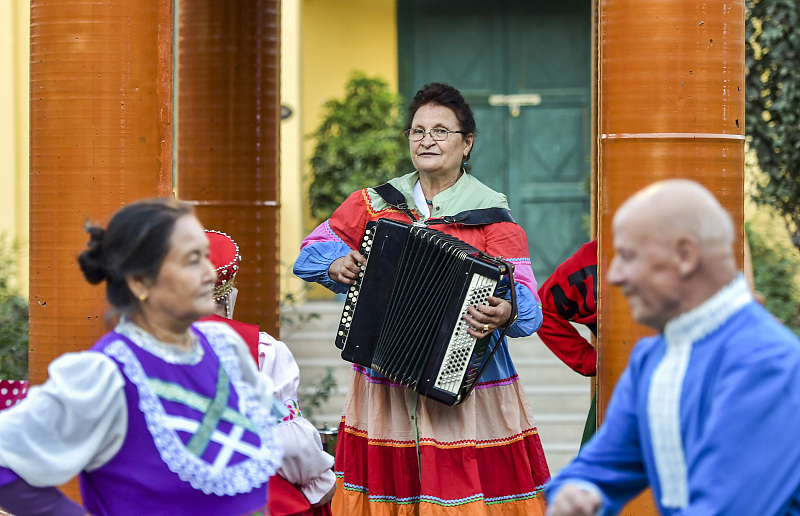The famous historical and cultural block Liu Xing Street was built in the 1930s in the city of Yining, northwest China's Xinjiang Uygur Autonomous Region.
Conceptualized by a German designer, the street's name is derived from its special hexagon structure, stretching from a round center to six main streets. Schools, shops and mosques were built in the center. Its residential community occupies the periphery, including Hui, Uygur, Kazakh and other ethnic groups. It's a typical example of cultural exchange between China and Central Asian countries.

A street view of Liu Xing Street in Yining, Xinjiang /CFP
A street view of Liu Xing Street in Yining, Xinjiang /CFP
Generally, the area has developed as a popular tourist spot. The block has retained its historical style and value while upgrading the living environment for local residents. Cultural exhibitions, local delicacies, restaurants, souvenirs, and local crafts, all can be found on the street. Artists and local folk performers often gather there to play musical instruments, dance and sing. The famous accordion museum is located on Liu Xing Street, which houses more than 800 accordions.

Locals perform together on Liu Xing Street in Yining, Xinjiang. /CFP
Locals perform together on Liu Xing Street in Yining, Xinjiang. /CFP
What's more, foodies can't miss various delicious Xinjiang specialties on offer at this block. Smoked mutton, juicy fruits, various kinds of bread, milk tea and other dairy products are all must-try dishes for visitors.
The block has witnessed the numerous historical and cultural changes of the city, preserving the old memories of ancient times while creating new memories with residents and visitors. Now, the block opens its doors to welcome the world to learn more about the history and culture of Xinjiang.